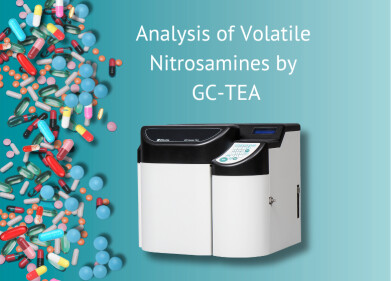Gas chromatography
Why Does Some Chocolate Smell 'Off'? Chromatography Investigates
Jun 14 2021
Chocolate is one of the most popular tastes across the globe. The same applies to its smell, with sweet, floral aromas coming from the cocoa beans that make most mouths water.
Unfortunately, that’s not always the case. But why exactly does some chocolate smell a bit ‘off’? Chromatography was used to find out…
The basics of cocoa beans
Good cocoa beans are a staple of any good chocolate product. The seed of the cacao tree are removed from their pods before being fermented, dried, cleaned and roasted. After the initial preparation, they are then ground into cocoa mass, liquefied (by heating) to create chocolate liquor, and then cooled and processed to create cocoa solids and cocoa butter.
Both cocoa solids and cocoa butter can be used in chocolate production. Dark chocolate and milk chocolate contain cocoa solids and cocoa butter, with the addition of milk powder of condensed milk for the latter product. However, white chocolate contains only cocoa butter, without any solids, along with sugar and milk.
The secret is in the storage
It’s fair to say that the two cocoa-based products shape the final flavour and smell of the chocolate. That’s why the entire process detailed above is so important – especially the initial storage. If cocoa beans aren’t stored correctly, they can become plagued by microorganisms which – if not identified and eliminated – will affect the cocoa mass, chocolate liquor, cocoa solids and butter, and of course the final chocolatey goodness.
The result is chocolate that smells, well… a bit ‘off’. Researchers at the Technical University of Munich decided to take a closer look at what exactly was behind the ‘off’ smell profile.
Using gas chromatography combined with olfactometry and mass spectrometry, they found the ‘off’ smelling chocolate had four compounds in higher concentrations than its non-musty counterparts – geosmin, 4-methoxy-2,5-dimethylfuran-3(2H)-one, 1H-indole, and 3-methyl-1H-indole. Troubleshooting and maintenance for this analytical technique is discussed in the article ‘Gas Chromatography Troubleshooting Part I – Peak Shape Issues’.
The primary contributors to the musty scent were found to be geosmin and 3-methyl-1H-indole. The former has previously been linked to beetroot odours, with the latter associated with mothballs and faecal matter. Researchers found that the geosmin compound came from the beans’ shells, which should be removed when they are processed, while 3-methyl-1H-indole comes from the bean nib that is used directly in the chocolate.
In future, it’s thought measuring these compounds could provide a fast, objective way to identify bad chocolate. Hopefully that means less chance of the ‘off’ smell making its way into your home – and your nostrils!
Events
May 11 2025 Vienna, Austria
May 18 2025 Tempe. AZ, USA
May 21 2025 Birmingham, UK
Jun 01 2025 Baltimore, MD, USA
Jun 15 2025 Bruges, Belgium


.jpg)











